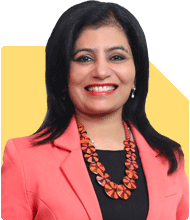Ramalingam Kalirajan |8365 Answers |Ask -Follow
Mutual Funds, Financial Planning Expert - Answered on May 18, 2024
He has an MBA in finance from the University of Madras and is a certified financial planner.
He is the director and chief financial planner at Holistic Investment, a Chennai-based firm that offers financial planning and wealth management advice.... more

I 35 year old and come under the category of 'professional' for income tax computation. I have been investing in mutual funds and have a corpus of 6 lakhs. Should I also invest in ppf, nps, FDs?
Evaluating Investment Options
Mutual Funds
Mutual funds offer the potential for higher returns compared to traditional options like PPF, NPS, or FDs. They provide exposure to a diversified portfolio of stocks or bonds, suited to your risk profile and investment horizon.
PPF (Public Provident Fund)
PPF offers tax benefits under Section 80C of the Income Tax Act and provides a guaranteed rate of return. It's a long-term investment option with a lock-in period of 15 years, offering safety and stability to your investment portfolio.
NPS (National Pension System)
NPS is a retirement-focused investment scheme with both equity and debt options. It offers tax benefits under Section 80CCD(1B) over and above the limit of Section 80C. NPS can be beneficial for building a retirement corpus, especially if you seek tax savings and long-term wealth accumulation.
FDs (Fixed Deposits)
FDs offer fixed returns over a specified period, providing stability to your portfolio. However, the returns may be relatively lower compared to mutual funds, PPF, or NPS. FDs can be suitable for short-term goals or as part of your emergency fund due to their liquidity.
Considerations for Your Portfolio
Risk Tolerance
Assess your risk tolerance and investment objectives before making any decisions. Mutual funds involve market risk but offer the potential for higher returns, whereas PPF, NPS, and FDs provide stability but may offer lower returns.
Tax Planning
As a 'professional', tax planning is crucial. Evaluate the tax benefits offered by PPF and NPS, along with the tax implications of your mutual fund investments. Choose investment avenues that optimize your tax liability while aligning with your financial goals.
Diversification
Diversifying your investment portfolio across different asset classes can mitigate risk and enhance returns. Consider a balanced approach by allocating funds to mutual funds for growth, PPF or NPS for tax-efficient long-term wealth accumulation, and FDs for stability and liquidity.
Conclusion
While mutual funds offer growth potential, diversifying your portfolio with PPF, NPS, or FDs can provide stability, tax benefits, and additional avenues for wealth accumulation. Evaluate your financial goals, risk tolerance, and tax planning requirements to make informed investment decisions.
If you need personalized advice or assistance in structuring your investment portfolio, feel free to reach out. I'm here to help you optimize your investments and achieve your financial objectives.
Best Regards,
K. Ramalingam, MBA, CFP,
Chief Financial Planner,
www.holisticinvestment.in
You may like to see similar questions and answers below
Ramalingam Kalirajan |8365 Answers |Ask -Follow
Mutual Funds, Financial Planning Expert - Answered on May 02, 2024
Ramalingam Kalirajan |8365 Answers |Ask -Follow
Mutual Funds, Financial Planning Expert - Answered on May 18, 2024
Ramalingam Kalirajan |8365 Answers |Ask -Follow
Mutual Funds, Financial Planning Expert - Answered on Jul 27, 2024
Milind Vadjikar |1219 Answers |Ask -Follow
Insurance, Stocks, MF, PF Expert - Answered on Apr 12, 2025
Archana Deshpande |108 Answers |Ask -Follow
Image Coach, Soft Skills Trainer - Answered on May 14, 2025
Archana Deshpande |108 Answers |Ask -Follow
Image Coach, Soft Skills Trainer - Answered on May 14, 2025
Archana Deshpande |108 Answers |Ask -Follow
Image Coach, Soft Skills Trainer - Answered on May 14, 2025
Mayank Chandel |2276 Answers |Ask -Follow
IIT-JEE, NEET-UG, SAT, CLAT, CA, CS Exam Expert - Answered on May 14, 2025
Mayank Chandel |2276 Answers |Ask -Follow
IIT-JEE, NEET-UG, SAT, CLAT, CA, CS Exam Expert - Answered on May 14, 2025
Mayank Chandel |2276 Answers |Ask -Follow
IIT-JEE, NEET-UG, SAT, CLAT, CA, CS Exam Expert - Answered on May 14, 2025
Mayank Chandel |2276 Answers |Ask -Follow
IIT-JEE, NEET-UG, SAT, CLAT, CA, CS Exam Expert - Answered on May 14, 2025
Mayank Chandel |2276 Answers |Ask -Follow
IIT-JEE, NEET-UG, SAT, CLAT, CA, CS Exam Expert - Answered on May 14, 2025
Radheshyam Zanwar |1626 Answers |Ask -Follow
MHT-CET, IIT-JEE, NEET-UG Expert - Answered on May 14, 2025
Radheshyam Zanwar |1626 Answers |Ask -Follow
MHT-CET, IIT-JEE, NEET-UG Expert - Answered on May 14, 2025






















